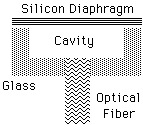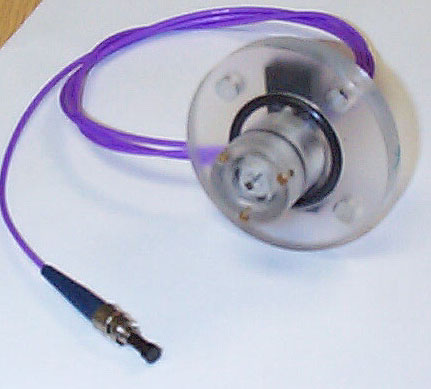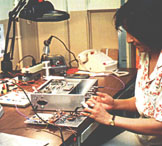
Key Benefits of a Micro-Machined Optically Integrated (MMOI) Sensor
- Can survive in a harsh operating environment
- Has high spatial and temporal response
- Can be used to obtain multi-parameter data
The micro-machined Fabry-Perot cavity sensor consists of two parallel partially reflecting surfaces separated by a gap. Light is introduced into the Fabry-Perot cavity through an optical fiber. The reflected light following multiple reflections within the cavity is carried back through the same fiber. This results in a periodic variation of the reflected light intensity as a function of the cavity depth h. The reflected light from the sensor is spectrally shifted. A ratio of two detectors was used to detect the spectral shift from which the pressure can be derived.
  |
 |
| Figure 1. Schematic of a MMOI; Cavity diameter = 300 micron, Diaphragm thickness = 12 micron. | Figure 2. Assembly of Optical Detection and Differential Amplification Box |
Differential and absolute pressure sensors were fabricated and tested under static and dynamic test conditions. The sensors provide extremely accurate, repeatable results over the designed range of operation. Dynamic testing results show that frequency response in the 180 KHz range was obtained. The sensor 1) can survive in a harsh operating environment, 2) has high spatial and temporal response, and 3) can be used to obtain multi-parameter data.
Send mail to chenth@taitech.com with questions or comments about this web site.
Copyright © 2002 Taitech, Inc.
Last modified: February 20, 2002